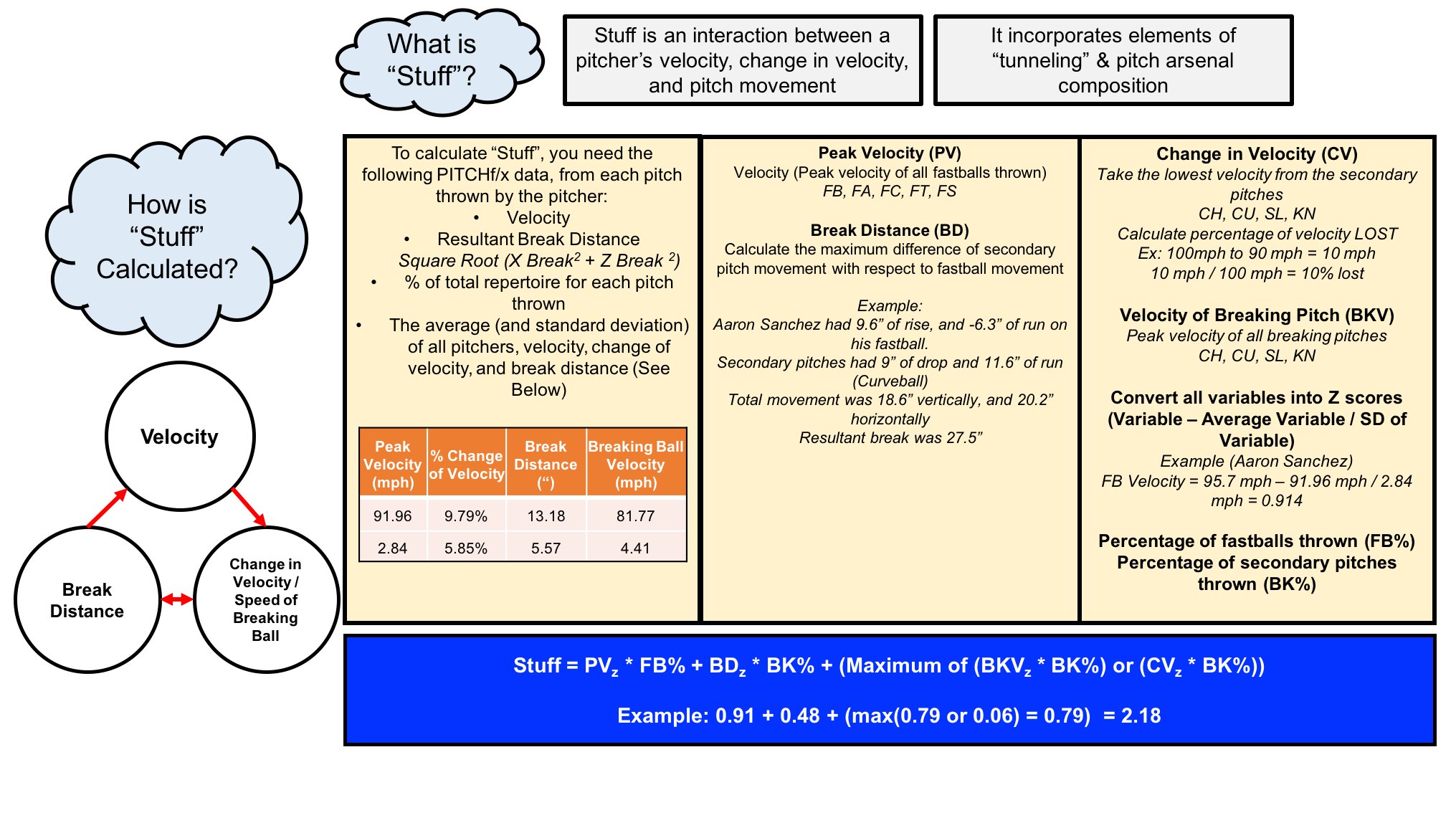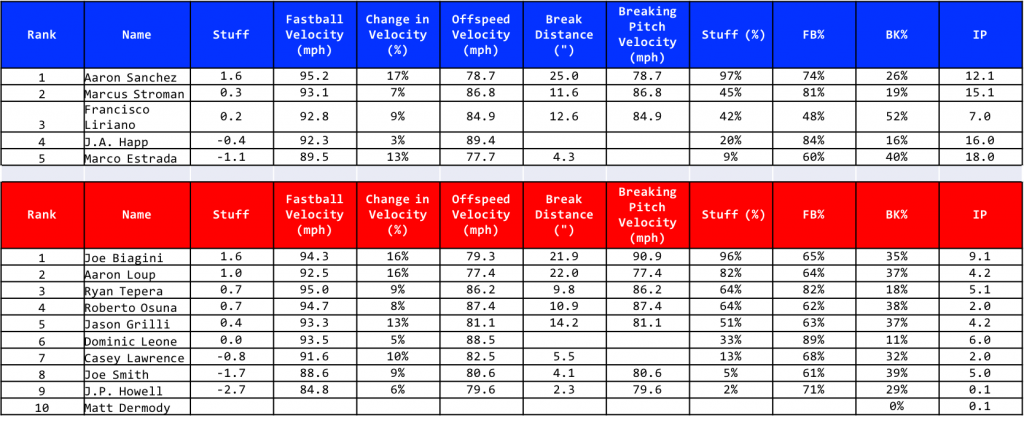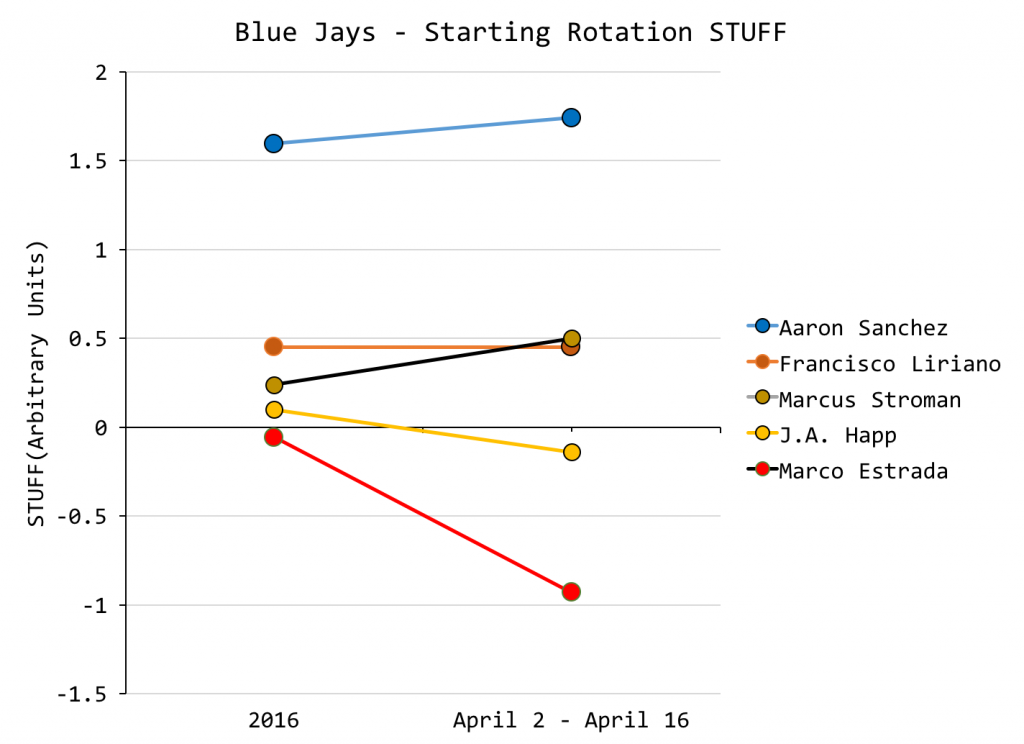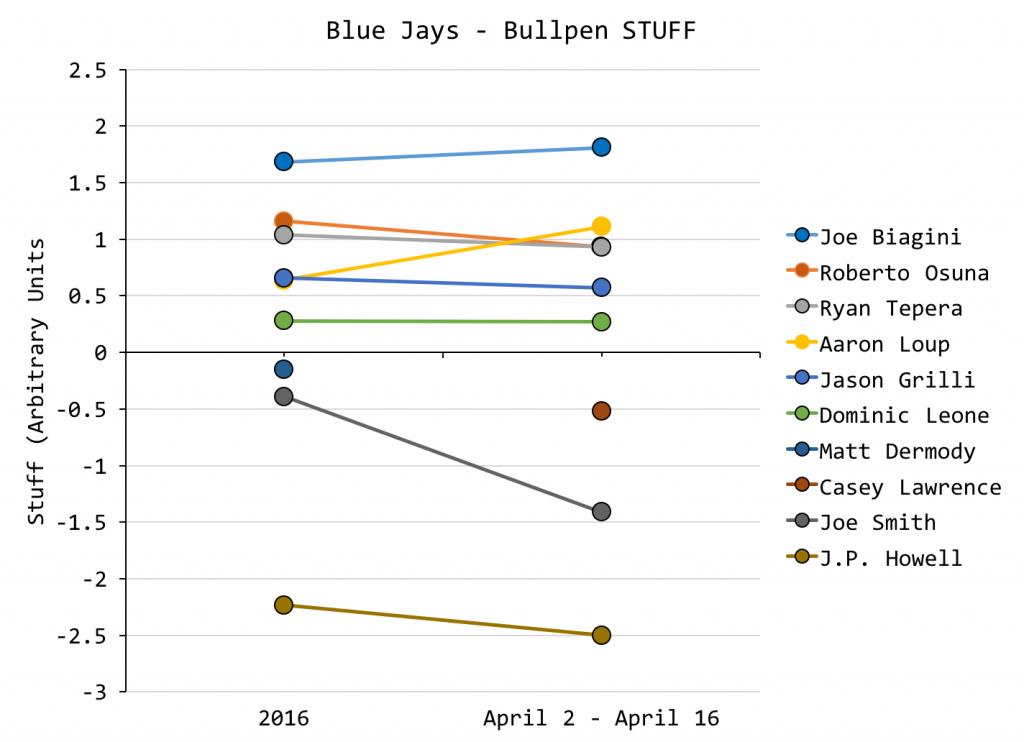***Sunday morning, Mike wakes up, knowing he has a Stuff report to file on Monday. He’s frustrated by the Blue Jays play, but relieved that he at least has an elite pitching rotation to write about***
7:38 am
Aaron Sanchez to the 10-day DL with a blister. Matt Dermody recalled, will give bullpen second Lefty for now.
— Keegan Matheson (@KeeganMatheson) April 16, 2017
***Swearing begins to intensify… but at least we get to watch the 20 game winner, J.A. Happ pitch today*** Approx 2:30 pm
Blue Jays starter JA Happ leaves game after 4.1 IP with apparent arm issue.
Jays 0 Orioles 0 (5th) on #TSN1040 right now. pic.twitter.com/I85fhW2JXT— TSN Radio Vancouver (@TSN1040) April 16, 2017
***Swearing reaches a peak level. Neighbours begin getting concerned.****
JA Happ will have an MRI tomorrow; Blue Jays will reevaluate after that.
— Arden Zwelling (@ArdenZwelling) April 16, 2017
***There is no sound. There is only pain. There is only darkness, death and despair. Joy was created to make pain feel worse***
Welcome to the 2017 Stuff report! I know, I know – not the most positive way to start the season, but let’s try and use numbers to numb our senses, and prevent the inevitable onset of alcoholism that this season will induce!
To bring you back to speed, STUFF is a metric that I created last year, to help win bar arguments with your friends about who has the best STUFF in baseball. The graphic at the top of this article should help with understanding how things are calculated, but to summarize: STUFF is the interaction of fastball and breaking pitch velocity, change in speeds, and separation distance between all pitches at the plate. If you want to read a bit more – check out some of these articles:
Development of the Stuff metric
The Stuff metric as an injury identification tool
But let’s get into the meat of our 2017 Toronto Blue Jays pitching staff.
A word of warning here: This season, MLB has changed the way that pitching numbers are collected, and velocities are appearing a bit wonky. I’ve normalized the 2017 data to the velocities and break movements that have been collected – so hopefully it all makes sense.
Let’s see what we’ve got:
Starting Pitchers
What else could be said about the Jays starting pitchers that hasn’t been said already? They’re awesome – well, they were when they were intact. Aaron Sanchez’s stuff is better than it was in 2016, and Marcus Stroman’s has improved dramatically. Ol’ Steady Francisco Liriano remains just where he was in 2016, but both Estrada and Happ look to be falling off. While Marco went through phases last season where his Stuff declined, the main reason for this happening was more of a byproduct of the STUFF calculation than it was with his performance. There was a period where his velocity declined, which hurt his Stuff in 2016 – but, the main reason for a huge drop in Estrada’s stuff is not throwing his curveball as much. If he gets that curve ball over 10% of his usage his Stuff climbs dramatically.
Happ is another Story. Joshua Howsam wrote about how Happ’s fastballs differentiate more from each other than any other pitcher in the MLB. This was a huge key to his success in the past two seasons. His commitment to the fastball is the main reason why he doesn’t have great STUFF – neither of his fastballs are particularly scorching, and his seldom used change up only differentiates in velocity by 3%. His results had been great, even up until the point where he left the game. I recently wrote about Zach Britton’s recent trip to the disabled list, and referenced a paper which cited a small repertoire of pitches as a possible risk factor for UCL injury. Happ’s arsenal is about as small as it gets. Hopefully he returns to the rotation as soon as possible.
Relief Pitchers
Joe Biagini continues to be a shining beacon for watching this Jays team. He is so, so good. Furthermore – he has such great STUFF. Biagini continues to impress on the metric, as his early season STUFF looks exceptional. His change in velocity and separation between pitches is elite, plus he pairs that with a very good fastball at 94.3 mph. For the most part, the Jays relievers have looked fairly consistent with their 2016 number. Roberto Osuna has a bit of a drop off – this might be him working through the rust of his early season DL trip. There isn’t much to worry about with Joe Smith, as Stuff isn’t the name of his game, and his approach to hitters looks like it is spot on right now.
The Stuff report will continue every 2 weeks over the course of the season – let’s hope we have something more interesting (and happy) to talk about other than cool graphs in the next issue.




Hi Mike,
I really like this column a lot. I wish the rest of the world offered such in-depth analysis of what is a phenomenal pitching staff.
I have a question about the values in the starting pitching portion of the stuff chart: I notice that Aaron Sanchez’s offspeed and breaking velocities are both 78.7 mph. Is his curve being used for both categories and his change-up not considered? The other starter’s offspeed velos seem to be based on their change-ups (close to the velocities of their change-up velos per brooks baseball). I was wondering if this gives Aaron an advantage on the stuff metric, as considering his change-up would shrink his velocity differential from 17% to approximately 6%.
Thanks,
Jon
Hey Jon – think of the Stuff metric as cube – with the height of the cube representing the amount of separation between pitches being the height of the cube, and the depth of the cube being the range between velocities. It doesn’t necessarily matter what pitches the velocity changes occur between – just that in that pitchers arsenal, they’re capable of changing speeds that much. If you look at Clayton Kershaw’s stuff, it’s very similar; a mid 90’s fastball, with a mid 70’s curve. It’s a huge weapon for both of them.